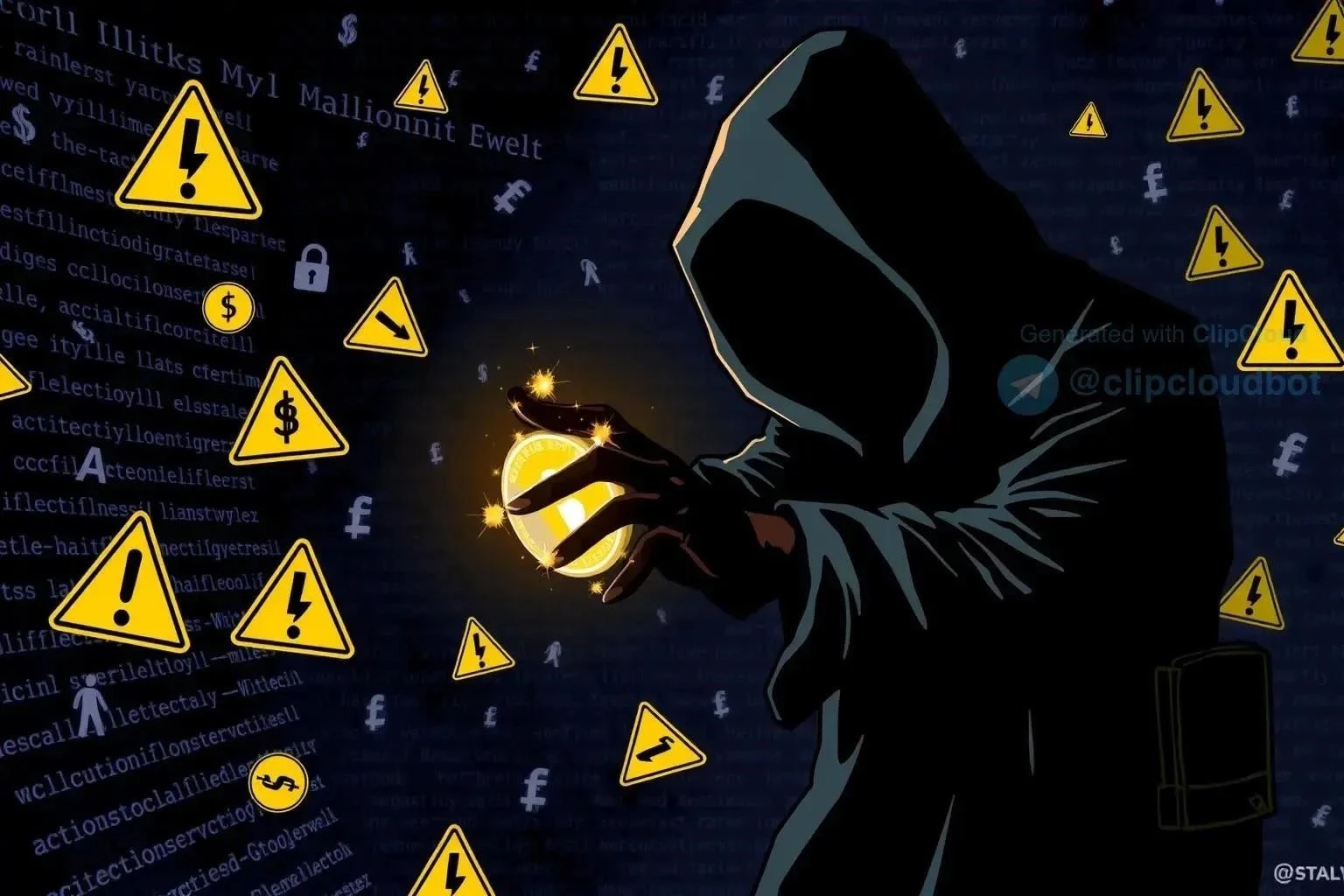The world of cryptocurrency offers exciting opportunities for investment and financial growth, but it also attracts scammers looking to exploit unsuspecting individuals. Navigating this digital landscape requires vigilance and a solid understanding of common fraudulent tactics. By learning to recognize the red flags and implementing preventative measures, you can significantly reduce your risk of falling victim to cryptocurrency scams. This article will explore four prevalent scams and provide practical advice on how to safeguard your investments.
The cryptocurrency market, while innovative, is unfortunately rife with scams. Knowing the common types of scams is the first step in protecting yourself.
1. Pump and Dump Schemes: Understanding Market Manipulation
Pump and dump schemes involve artificially inflating the price of a cryptocurrency through misleading positive statements, creating a buying frenzy. Once the price is high enough, the scammers sell their holdings for a profit, leaving other investors with significant losses as the price crashes. These schemes often target smaller, less established cryptocurrencies.
- Red Flags: Sudden, unexplained price surges; aggressive promotion on social media; promises of guaranteed returns.
- How to Avoid: Conduct thorough research before investing; be wary of hype and FOMO (fear of missing out); avoid cryptocurrencies with limited liquidity.
2. Phishing Attacks: Protecting Your Cryptocurrency Wallet
Phishing attacks involve tricking individuals into revealing their private keys, passwords, or other sensitive information. Scammers often use fake websites, emails, or social media messages that mimic legitimate cryptocurrency exchanges or wallets.
Factoid: Phishing attacks are becoming increasingly sophisticated, with scammers using advanced techniques to create convincing replicas of legitimate websites. Always double-check the URL and look for the padlock icon in your browser’s address bar.
- Red Flags: Unsolicited emails or messages requesting personal information; suspicious links; poor grammar and spelling.
- How to Avoid: Enable two-factor authentication (2FA) on all your cryptocurrency accounts; never share your private keys; verify the authenticity of websites and emails before entering any information.
3. Fake ICOs (Initial Coin Offerings): Due Diligence is Key
ICOs are a way for new cryptocurrency projects to raise capital. However, many fake ICOs are designed to steal investors’ money. These projects often lack a legitimate business plan, a credible team, or a working product.
Red Flags: Unrealistic promises, lack of transparency, anonymous team members, and a poorly written whitepaper are all warning signs.
How to Avoid: Thoroughly research the team, the project’s whitepaper, and its potential use case. Look for independent reviews and audits. Invest only what you can afford to lose.
4. Ponzi Schemes: Guaranteed Returns are a Red Flag
Ponzi schemes pay returns to existing investors from funds collected from new investors, rather than from actual profits. These schemes are unsustainable and eventually collapse, leaving most investors with nothing.
Red Flags: Guaranteed high returns, complex investment strategies, and pressure to recruit new investors are all classic signs of a Ponzi scheme.
How to Avoid: Be skeptical of any investment that promises guaranteed returns. Understand how the investment generates profits. Avoid investments that rely solely on recruiting new investors.
FAQ: Frequently Asked Questions About Cryptocurrency Scams
Q: How can I tell if a cryptocurrency exchange is legitimate?
A: Look for a reputable exchange with a proven track record. Check for security measures like two-factor authentication and cold storage of funds. Read reviews and do your research before depositing any money.
Q: What should I do if I think I’ve been scammed?
A: Report the scam to the relevant authorities, such as the Federal Trade Commission (FTC) in the United States. Change your passwords and enable 2FA on all your accounts. Contact your bank or credit card company if you made any payments.
Q: Is cryptocurrency inherently risky?
A: Cryptocurrency investments are inherently risky due to market volatility and the potential for scams. However, by educating yourself and taking precautions, you can mitigate some of the risks.
Q: Where can I learn more about cryptocurrency security?
A: There are many resources available online, including articles, forums, and educational courses. Look for reputable sources and be wary of information that promotes specific investments.
Protecting yourself from cryptocurrency scams requires constant vigilance and a healthy dose of skepticism. By understanding the common types of scams, recognizing the red flags, and implementing preventative measures, you can significantly reduce your risk of becoming a victim. Remember to always do your own research, never invest more than you can afford to lose, and be wary of anything that sounds too good to be true. Staying informed and cautious is the best defense against cryptocurrency fraud.
Advanced Strategies for Cryptocurrency Security and Scam Prevention
Beyond recognizing common scams, implementing advanced security measures and adopting a proactive approach to risk management are paramount for safeguarding cryptocurrency assets. This section delves into sophisticated strategies that bolster security and mitigate the potential for financial loss.
1. Hardware Wallets: The Gold Standard for Secure Storage
Hardware wallets, also known as cold storage wallets, represent the most secure method for storing cryptocurrency. These physical devices store private keys offline, rendering them impervious to online hacking attempts. Transactions must be physically authorized on the device, adding an extra layer of security.
- Implementation: Purchase a hardware wallet from a reputable manufacturer. Ensure the device is new and tamper-proof. Follow the manufacturer’s instructions meticulously for setup and usage.
- Best Practices: Store the hardware wallet in a secure location. Never share your recovery seed phrase with anyone. Regularly update the device’s firmware.
2. Multi-Signature Wallets: Enhanced Security Through Collaboration
Multi-signature (multi-sig) wallets require multiple private keys to authorize a transaction. This distributed control mechanism significantly reduces the risk of unauthorized access, as a single compromised key is insufficient to move funds. Multi-sig wallets are particularly beneficial for businesses and organizations managing substantial cryptocurrency holdings.
Factoid: Multi-signature wallets operate on the principle of quorum. For instance, a 2-of-3 multi-sig wallet requires two out of three authorized parties to approve a transaction, providing a robust safeguard against internal fraud or external attacks.
3. Advanced Due Diligence: Scrutinizing Cryptocurrency Projects
Before investing in any cryptocurrency project, conduct comprehensive due diligence that extends beyond superficial research. This includes scrutinizing the project’s code, evaluating the team’s expertise, and assessing the project’s long-term viability.
- Code Audits: Review the project’s smart contract code for vulnerabilities and potential exploits. Independent audits by reputable security firms provide an objective assessment of the code’s integrity.
- Team Assessment: Investigate the team’s background, experience, and reputation. Verify their credentials and assess their commitment to the project’s success.
- Viability Analysis: Evaluate the project’s market potential, competitive landscape, and regulatory environment. Determine whether the project addresses a genuine need and possesses a sustainable business model.
4. Security Audits and Penetration Testing: Proactive Vulnerability Assessment
For organizations operating cryptocurrency exchanges or developing blockchain applications, regular security audits and penetration testing are essential. These assessments identify vulnerabilities in systems and applications, allowing for proactive remediation before they can be exploited by malicious actors.
5. Staying Informed: Continuous Learning and Adaptation
The cryptocurrency landscape is constantly evolving, with new scams and security threats emerging regularly. Staying informed about the latest trends and best practices is crucial for maintaining a robust security posture. Subscribe to reputable security newsletters, attend industry conferences, and participate in online forums to stay abreast of the latest developments.
FAQ: Advanced Security Considerations
Q: What is the best way to secure my cryptocurrency exchange account?
A: Enable two-factor authentication (2FA) using a hardware security key (e.g., YubiKey) for the highest level of security. Use a strong, unique password and avoid reusing passwords across multiple accounts. Regularly review your account activity for suspicious transactions.
Q: How can I protect myself from SIM swapping attacks?
A: A SIM swapping attack involves transferring your phone number to a SIM card controlled by a scammer. To protect yourself, use a strong PIN on your mobile account, be wary of unsolicited calls or messages, and consider using a different phone number for cryptocurrency-related accounts.
Q: What are the risks of using custodial cryptocurrency services?
A: Custodial services hold your private keys on your behalf, which introduces a risk of loss or theft due to hacking or mismanagement. While convenient, custodial services require a high degree of trust in the provider’s security practices. Consider using non-custodial alternatives where you retain control of your private keys.
Q: How can I verify the authenticity of a cryptocurrency project’s website?
A: Check the website’s SSL certificate to ensure it is valid and issued by a reputable certificate authority. Verify the domain name and look for any misspellings or variations. Use a website reputation checker to assess the website’s trustworthiness.
Securing cryptocurrency assets requires a proactive and multi-layered approach that encompasses robust security measures, diligent due diligence, and continuous learning. By implementing the strategies outlined in this article, individuals and organizations can significantly enhance their security posture and mitigate the risks associated with cryptocurrency investments. Remember that vigilance and a commitment to best practices are essential for navigating the complex and ever-evolving world of cryptocurrency security.


